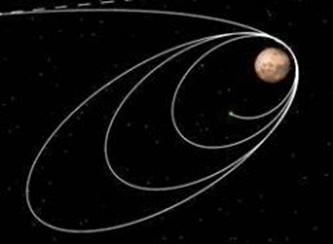While an aerocapture could slow an asteroid down enough to keep it from escaping back out into deep space, the problem you would face without a third body or additional applied force is that the periapsis (lowest point of orbit) now lies within the atmosphere. Subsequent orbital rotations would continue to slow it down until it falls into the atmosphere for good.
Here's an image for reference (source). For every pass, the point at which it contacts the atmosphere remains nearly the same, but the apoapsis (highest point of orbit) will continue to reduce until the path becomes suborbital, and into the planet it goes.
If you do have a third body such as the Moon however, it could potentially (if improbably) temporarily stabilize the orbit. I say temporarily because in order for the Moon to have enough influence on the asteroid to stabilize the orbit, the asteroid must continue to pass close enough to the Moon's orbital path that another such encounter would inevitably occur, throwing the asteroid into a different orbital path each time. This could eventually result in an Earth or Lunar collision, but not an escape, since too much energy would have been lost during the aerocapture.

